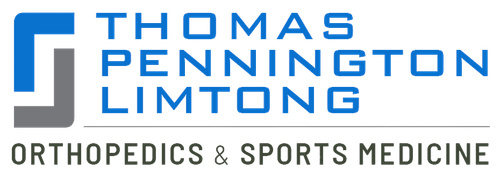
The shoulder is the most moveable joint in the body, but this greater range of motion may also become the cause of instability. Shoulder instability occurs when overuse or injury causes the head of the upper arm bone to be forced out of the shoulder socket. Once the dislocation has occurred, the shoulder is vulnerable to repeat episodes.
When a loose shoulder repeatedly slips out of position, it is known as chronic shoulder instability. Dr. Steven Thomas and Dr. Gregory Bigler are board certified orthopedic surgeons providing treatments for shoulder instability to patients in Las Vegas, Nevada, and surrounding communities.
Causes
Shoulder Dislocation
Initial shoulder dislocation is often caused due to a severe injury or trauma. A severe first dislocation may trigger continued dislocations, creating shoulder instability.
Repetitive Strain
Some sports activities such as swimming, volleyball, and tennis and certain types of jobs require repetitive overhead motion. This can lead to looser ligaments over time, which can make it difficult to maintain shoulder stability and sometimes cause a painful, unstable shoulder.
Multidirectional Instability
In a few patients, shoulder may feel loose or dislocate in several directions without any history of repetitive strain or injury. In such patients, the ball may dislocate out the back, front, or bottom of the shoulder. These patients have naturally loose ligaments in their body.
Symptoms
Some of the common signs of chronic shoulder instability include:
- Pain caused by injury to the shoulder
- Repeated dislocations of the shoulder
- Repeated episodes of the shoulder giving out
- A persistent feeling of the shoulder becoming loose or slipping in and out of the joint
Board certified orthopedic surgeons Dr. Thomas and Dr. Bigler receive patients from Las Vegas, Nevada, and nearby areas for treatment of shoulder instability.
Treatment
The surgeon may first try to treat chronic shoulder instability with non-surgical treatment options. Surgery may be recommended only if the pain and instability fails to improve.
Non-Surgical Treatment
The patient will be asked to make some modifications in their lifestyle and avoid certain physical activities that may aggravate the symptoms. NSAIDs and aspirin may be prescribed to mitigate pain and swelling.
Physical therapy is a key part of non-surgical treatment for shoulder instability. The therapist will create a home exercise program to strengthen shoulder muscles and work on shoulder control to improve stability.
Surgical Treatment
Torn or stretched ligaments may be repaired with surgery in order to ensure that they are able to holder the shoulder joint firmly in its position. Surgical repair for Bankart lesions may also be performed. Sutures and anchors will be used to reattach the bone and the ligament.
Arthroscopic surgery can be used to repair soft tissues in the shoulder using very small incisions. The procedure can be performed on an outpatient basis. The surgeon will view the internal shoulder structures with a tiny camera and perform the surgery using ultra-thin instruments.
A few patients may require an open surgical procedure. This will involve a larger incision over the shoulder, allowing the surgeon to perform the repair under direct visualization.
If you would like to schedule an appointment or learn more about the Knee and Shoulder Institute procedures & treatments performed by Las Vegas, Nevada board certified surgeons Steven C. Thomas, MD and Gregory T. Bigler, MD. call (702) 933-9393; Physical Therapy (702) 933-9394
